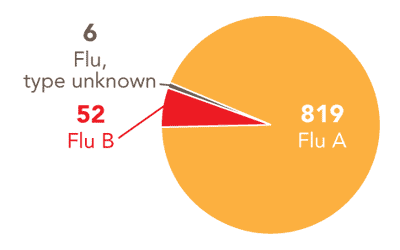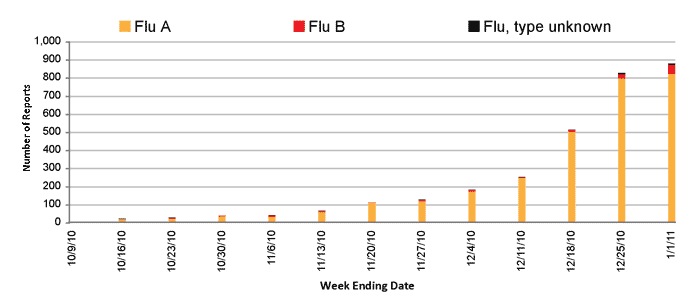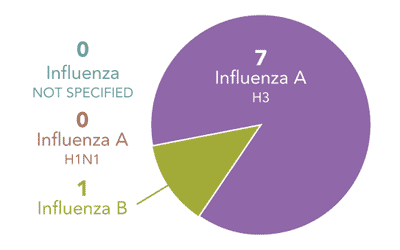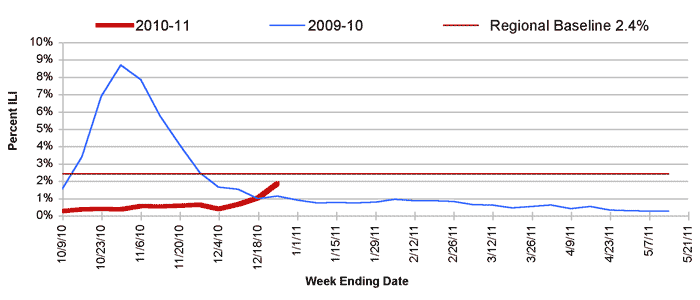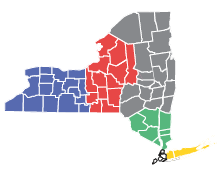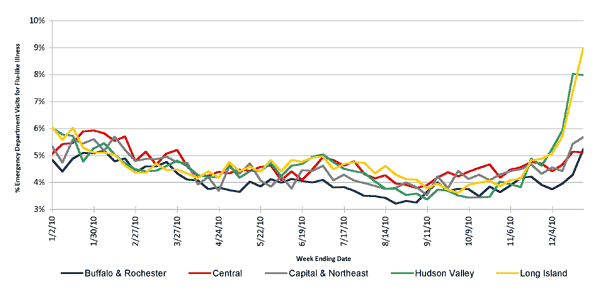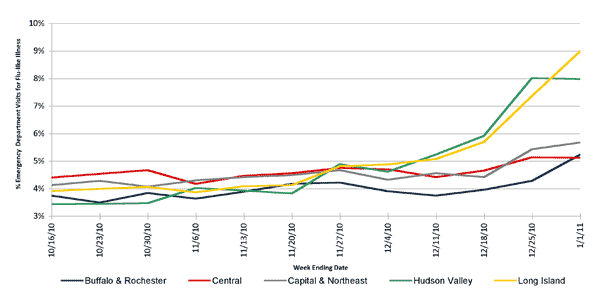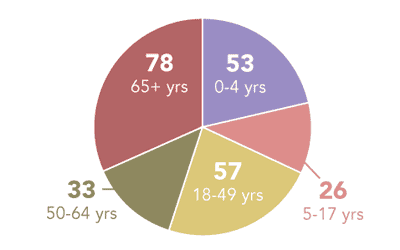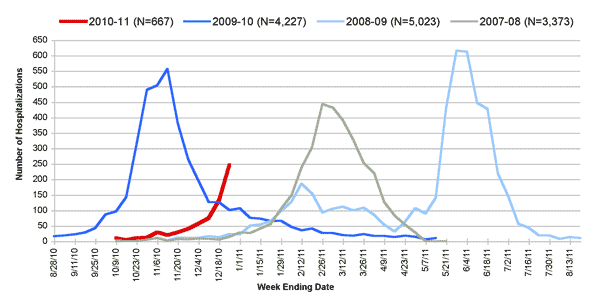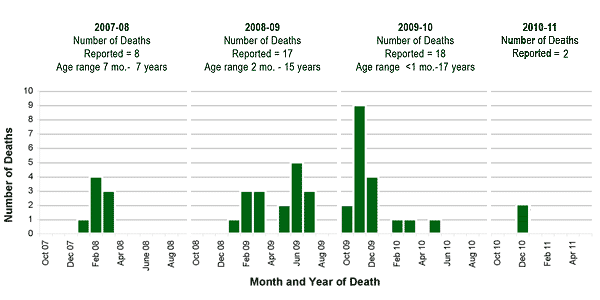New York State Department of Health 2010-2011 Flu Monitoring - Week Ending January 1, 2011
The New York State Department of Health (NYSDOH) monitors flu in New York State (NYS). Detailed information about flu monitoring in New York City (NYC) is available directly from the New York City Department of Health and Mental Hygiene (NYCDOHMH) website.
Key findings from current flu monitoring systems for the week ending January 1, 2011 include:
- The overall level of flu activity is currently moderate and appears to be increasing when compared to last week.
- The number of people hospitalized with flu is currently 247 and appears to be increasing when compared to last week.
- The number of pediatric influenza-associated deaths in NYS (including NYC) is currently 0 reported this week.
- The total number of pediatric influenza-associated deaths in NYS (including NYC) since October 3, 2010, is 2.
Statewide Testing for Flu (NYS and NYC)
- All laboratories (public, private, hospital, commercial, etc.) that perform testing on residents of the state report all positive flu test results.
- Test results may identify Flu Type A, Flu Type B, or Flu without specifying Type A or B. Some tests only give a positive or negative result and cannot identify flu type (unknown).
- There are two main types of flu viruses-Type A and Type B. Type A flu viruses can be broken down further into 2 common subtypes. Each subtype has a slightly different genetic makeup from the other.
All Positive Flu Reports for week ending 1/1/11
All Positive Flu Reports (season to date, by week)
Public Health Testing for Flu (outside of NYC)
- Wadsworth Center, the NYSDOH public health laboratory, tests a subset of NYS residents from sources including:
- A select group of doctors from around the state send samples from patients with complaints of illness consistent with flu that they see in their offices.
- A select group of hospitals from around the state send samples from patients who are admitted to the hospital with complaints of illness consistent with flu.
- Wadsworth Center tested 20 specimens, of which 8 were positive for influenza.
- The New York City Public Health Laboratory tests a subset of NYC residents. Results of this testing are reported on the NYCDOHMH website.
Subtypes Tested at Wadsworth Center for week ending 1/1/11
Doctors' Office Visits for Flu – Sentinel Providers in NYS (outside of NYC)
- The NYSDOH works with a select group of doctors ("sentinel providers") across the state who report the total number of patients they saw and the total number of those patients with complaints of illness consistent with flu every week.
- The graph below represents the percent of visits to these sentinel providers that were for patients with complaints of illness consistent with flu.
- The Centers for Disease Control and Prevention (CDC) uses trends from past years to come up with a "regional baseline" rate of doctors' visits for illness consistent with flu. For NYS, the "regional baseline" is currently 2.4%. Numbers above this "regional baseline" suggest high levels of illness consistent with flu in the state.
Percent of Visits to Sentinel Providers in NYS (Outside of NYC) for Flu-like Illness (season to date, by week)
Emergency Department Visits for Flu - Syndromic Surveillance for NYS (outside of NYC)
- Hospitals around NYS report the number of patients seen in their emergency departments with complaints of illness consistent with flu. This is called "syndromic surveillance."
- An increase in visits to hospital emergency departments can be one sign that flu has arrived in that part of NYS.
- "Syndromic surveillance" does not reveal the actual cause of illness.
- "Syndromic surveillance" information specific to hospitals in NYC can be found at the NYCDOHMH website
Flu-like Illness in NYS Hospital Emergency Departments as Percentage of Total Emergency Department Visits, by Region (past 52 weeks)
Flu-like Illness in NYS Hospital Emergency Departments as Percentage of Total Emergency Department Visits, by Region, 3 month snapshot
Hospitalizations for Flu - Statewide (NYS and NYC)
- All hospitals in NYS and NYC report to NYSDOH the number of patients admitted to their hospital with a positive flu test (any type of test, for any type of flu).
- 147 out of 218 hospitals (67%) statewide completed the report.
Age Groups for Hospitalized Flu Patients
Hospitalized Flu Patients, Current and Prior Flu Seasons
Note: Routine influenza surveillance begins with week 40 and ends with week 20. Surveillance during the 2009 H1N1 pandemic resulted in changes to the routine surveillance periods for the 2008-09 and 2009-10 seasons, as follows:
- 2008-09 season began with week 40 and ended with week 34.
- 2009-10 season began with week 35 and ended with week 20.
Pediatric Deaths Associated with Flu – Statewide (NYS and NYC)
- Since December 2004, flu-associated deaths in children younger than 18 years old have been reportable in NYS.
- All pediatric flu-associated deaths included in this report are laboratory-confirmed.
